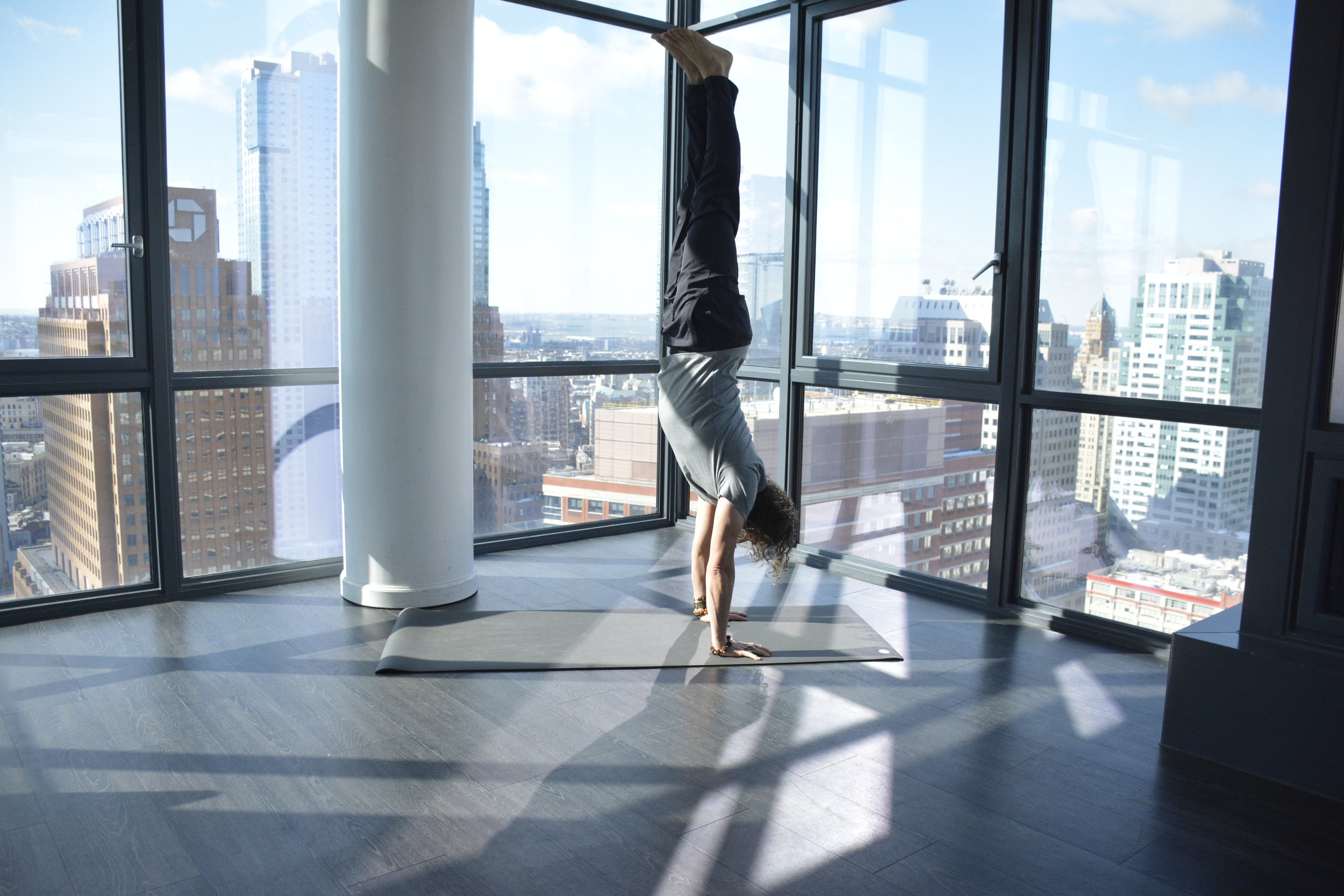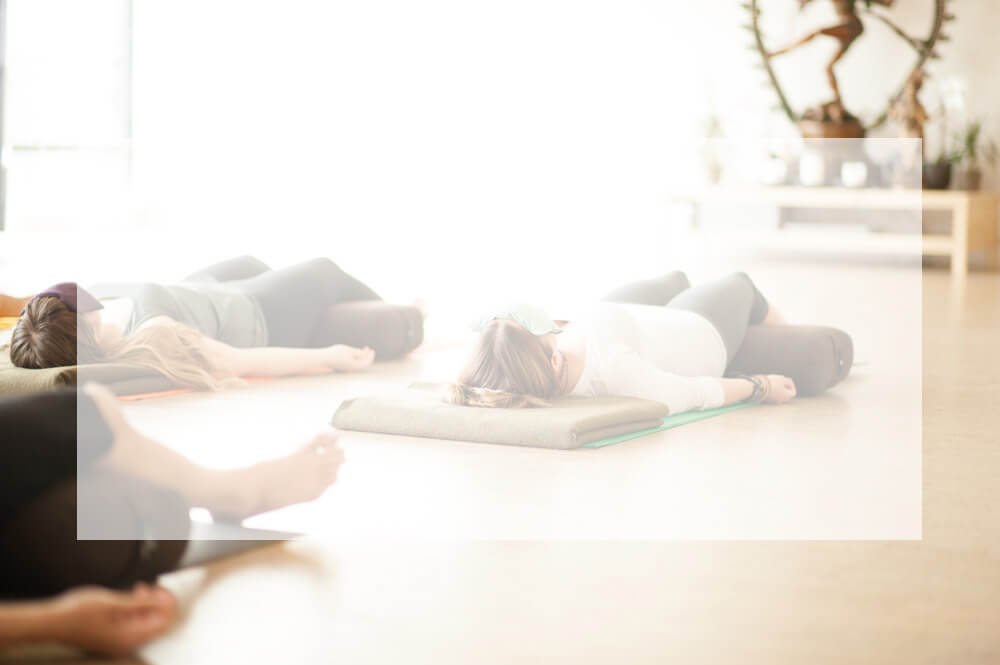Sometimes, I just want to punch in some coordinates into my phone just so I can hear the comfort of a familiar voice tell me where to go in life. Today, I want to tell you a story about how Yoga Nidra facilitated me feeling a breath-taking rapture that gave me some enormous clarity for my purpose in life at a time when I desperately needed it.
For me, Yoga Nidra has been perhaps the most illuminating practice I’ve experienced in my life. It’s taught me more about myself and the Universe than any other practice. If you don’t know, it’s a guided meditation where you lie down and get extremely relaxed, and drift into that fascinating, in-between state of consciousness, an experience that actually stimulates profound awareness. As you listen to a facilitator lead you through the practice, you gain a beautiful and broad perspective about life, problems, and the simple joy of being awake to the beauties of this world. I’ve been studying and practicing Yoga Nidra for more than 13 years and anymore when I do Yoga Nidra I am led through the very same process of keen awareness as I am facilitating for my students.
But I wasn’t expecting this …
One day, when I was living and teaching in New York, I was on the subway, heading from Brooklyn to the Upper West Side to teach a Yoga Nidra class. The train rumbled and swayed as it crossed the Manhattan bridge and if I could see past the glare on the water, I’d be able to see the Statue Of Liberty out the window. But I wasn’t feeling free. I spent the entire trip uptown worrying about whether or not New York was the right place for us.
We had moved to New York for my wife’s job but I was also eager to try to “make it” as a yoga teacher in a city that has some of the finest yoga teachers in the world. My wife is brilliant at what she does, yet her job, placing her at the top of her field, was leaving her feeling very flat and unfulfilled. She worked long, hard hours and we hardly saw each other. Often, we’d meet on the sidewalk, her walking home from work, me walking to teach a class and pushing the stroller with our 2-year-old. We’d exchange a quick kiss, hand off the stroller, and she’d head home with our son while I went off to teach. Like no other time in our marriage, we were stressed and we were struggling.
Seneca had started bringing up the idea of perhaps moving away from New York to try something new so we wouldn’t feel so stressed all the time. I felt conflicted because I wanted us to stay and try to make it work in New York. Every bump and sway on that crowded and hot subway bounced my brain with that bullshit phrase, “If you can make it in New York, you can make it anywhere.” I didn’t know what we should do, whether to struggle longer and try to “make it work” in New York or to cut our losses and move somewhere else. I didn’t have a solution.
That night, I taught a Yoga Nidra class at Pure Yoga in Manhattan. My theme for class was to tap into the abundance of one’s heart energy. I’d been developing as a Yoga Nidra teacher for the past decade or so and as I was leading the class, I simply closed my eyes and sourced something that was both inside of me and outside of me. I no longer felt the worry and angst I’d experienced earlier. Instead, I felt as though I was channeling pure love. Though I couldn’t name it at that time, I had somehow taught myself to experience the same Nidra state of mind that my students were experiencing, while I was teaching. I had discovered teaching Yoga Nidra as its own pathway to waking up, it’s own spiritual practice, and teaching that class about sourcing the heart lit me up like fireworks.
After class, I walked down Amsterdam Avenue on my way to catch the red line back home to Brooklyn and because of this Yoga Nidra practice that I’d just taught and simultaneously experienced, my entire being felt an absolute surge of well-being and love. I was absolutely brimming with joy. At that moment, it felt as if my eyes suddenly had a super-human focus, like I could see more than 79 blocks down Amsterdam Ave, all the way to the Hudson and that they could see every detail, from the birds landing on the light posts to the dirt in the gutter and all of it felt somehow like an expression of limitless love. I floated down the street with a smile on my face feeling like nothing could ever be so perfect. As I passed people on the street—everyone from the homeless guy to the stressed out business guy—it felt like I could feel into everyone’s heart and could feel everyone’s inherent goodness. Everything felt special, good, and magical, as if each object in the world were somehow a love note from the Divine just for me telling me, “Look at this. I made it for you.”
As I walked to the subway, I still didn’t have any greater clarity about whether or not to stay in New York but nor did I have any worry. What was crystal clear was that I was doing the work that I was meant to do and that no matter if I lived in New York or New Zealand, Utah or Uganda, it didn’t really matter so long as I was doing what I love to do. I knew that as long as I was sharing this message of connection with the world, that the world would somehow help me “make it” wherever I was.
This experience of walking down Amsterdam avenue, bursting with joy and love for the rats and birds and homeless folks on the street, reminds me of poet William Wordsworth (late 1700s, into the 1800s). There was a time when Wordsworth was feeling stressed, just like I was. His parents died when he was young and he and his sister were raised, quite begrudgingly, by some relatives who were counting the days for him to grow up and move out, preferably employed so he could take his sister with him. As Wordsworth was becoming a young adult, he was receiving enormous pressure from his guardians to take on a respectable and financially secure job as a clergyman. The problem was that he didn’t want to become a clergyman. He was passionate about poetry and dreamed of making a life as a poet. Announcing that you want to be a poet rather than a clergyman would be like telling mom and dad that you’ve decided not to go to law school so you could explore a career as a rockstar.
By Diliff - Own work, CC BY-SA 3.0, https://commons.wikimedia.org/w/index.php?curid=7174148
Well, one morning Wordsworth was walking home in the early twilight through the hills and grasslands near his home by the Lake District in Northern England, his mind contemplating his future. In those magical blue-black hours of first light, he became spellbound and fiercely present to his beautiful landscape—those green hills, the ocean laughing at the distance, and the vapors rising off the dew like an intoxicating smoke raising his spirits. His senses were turned up to 11, giving him something better than an out-of-body experience, a completely in-bodied experience. His heart was a supernova of peace, love, and joy. And in that moment of intense rapture, Wordsworth received a massive download from the Powers That Be that poetry was what he is meant to do in life, and what’s more, that he would actually be doing the world a massive disservice if he didn’t pursue poetry. He received this message loud and clear. Though he didn’t have all the details yet, he nonetheless knew that the details were secondary to the simple clarity of knowing that he would become a poet.
And from that moment forward, Wordsworth never doubted. He went on to be, well, William Wordsworth, essentially the Michael Jordan of the Romantic poets. William and his sister Dorothy were very close (she was a great poet in her own right) and together they devised a way that they could continue living and working together. Dorothy worked with him his entire career to help him become the poet that we are still talking about more than 220 years later. By becoming fiercely present that day walking through the hills, William Wordsworth was able to hear what plans the Universe had in store for him, something that worked out greater than his wildest dreams.
The poem that speaks of his revelation to become a poet goes as follows and is from his magnum opus, The Prelude.
Magnificent
The morning was, a memorable pomp,
More glorious than I ever had beheld.
The sea was laughing at a distance; all
The solid mountains were as bright as clouds,
Grain-tinctured, drenched in empyrean light;
And in the meadows and the lower grounds
Was all sweetness of a common dawn –
Dews, vapours, and the melody of birds,
And labourers going forth into the fields.
Ah, need I say, dear friend, that to the brim
My heart was full? I made no vows, but vows
Were then made for me: bond unknown to me
Was given, that I should be – else sinning greatly –
A dedicated spirit. On I walked
In blessedness, which even yet remains.
Yoga Nidra was the catalyst that facilitated a fierce presence for me in order to have my own Wordsworthian moment as I was walking down Amsterdam Ave, totally brimming with life’s fullness. Yoga Nidra is only one way of cultivating such presence, but one that I feel is unique, approachable, and very effective. Maybe Yoga Nidra can facilitate your Wordsworthian moment.
What is your calling in this world? What is the Universe telling you that you must do for the world, “lest you be sinning greatly?” Are you a teacher, a therapist, a coach, or a parent? How might learning to facilitate Yoga Nidra, this beautiful practice of exquisite presence, help you to create clarity for your own life’s purpose as well as your clients, students, family members, or community? Teaching Yoga Nidra may or may not be your calling but it may be a wonderful tool to help you excel in whatever the Universe has in store for you.
Please consider joining me for my live, online Yoga Nidra training. It’s going to be illuminating, relaxing, and empowering. Learn how to facilitate incredible clarity for your own life and for others.
I only do this a few times a year and I’d love to have you join me.
2 weekends, 40 hours: July 31–Aug. 1st; Aug. 6–8, 2021, 9 am to 5 pm MDT. Zoom. Recorded for your own convenience in case you can’t make all the sessions and so you can resource the materials as long as you’d like.
Plus, as soon as you register you’ll also get complimentary access to pre-recorded online curriculum as well as access to 2 weekly live Yoga Nidra classes for the duration of the training. This is for your own benefit as well as to learn how to host your own online Yoga Nidra classes.
Please enjoy this free Yoga Nidra practice ($7 value) Waking from the Dream, Opening To Awareness (43 minutes) to facilitate your own clarity and heart power.




















